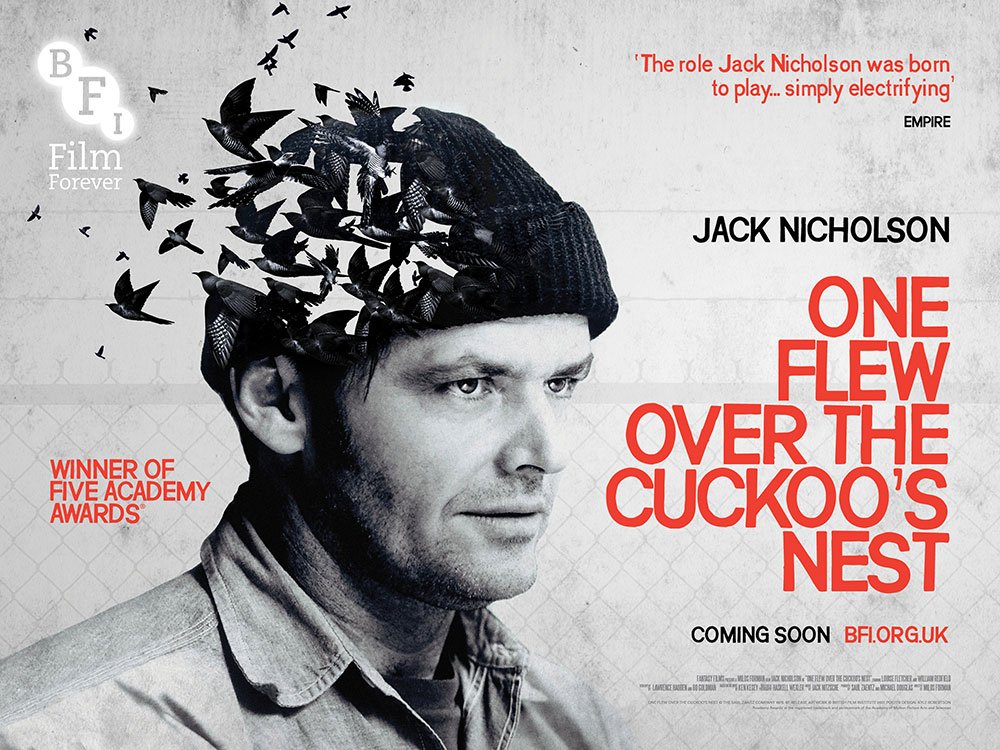|
By A. Nogueira Book vs. Movie
Book Title: One Flew over the Cuckoo’s Nest Release date: 1963 Writer: Ken Kesey Genre: Drama Goodreads rating: 4.18/5 My Rating: 10/10 Movie Title: One flew over the Cuckoo’s Nest Release date: 1975 Director: Miloš Forman Main cast: Jack Nicholson, Louise Fletcher, Danny DeVito, Brad Dourif and Will Sampson Budget: 4.4 million USD Rotten Tomatoes rating: 95% Google film synopsis: When Randle Patrick McMurphy (Jack Nicholson) gets transferred for evaluation from a prison farm to a mental institution, he assumes it will be a less restrictive environment. But the martinet Nurse Ratched (Louise Fletcher) runs the psychiatric ward with an iron fist, keeping her patients cowed through abuse, medication and sessions of electroconvulsive therapy. The battle of wills between the rebellious McMurphy and the inflexible Ratched soon affects all the ward's patients. My Rating: 9.5/10 The movie One Flew Over the Cuckoo’s Nest is one of the best ones I've ever watched. It was awarded 5 Oscars out of 9 nominations. OFOTCN was also the first film since 1934’s It Happened One Night to win all five of the top Academy Awards: best picture, actor (Jack Nicholson), actress (Louise Fletcher), director (Miloš Forman) and screenplay (Lawrence Hauben and Bo Goldman). Not only this, but the book is a classic and became my all time favourite as I read it for IB English literature course. Firstly, I noticed that while the book was a first person narrative from Chief Bromdem's perspective, the movie differs as he has a way less significant role, contributing to the colonial view that is criticised by the novel. The book has character complexity that I’d never previously witnessed, with an unusual narration that instantly captivates readers. Moreover, it builds tension until the conflict occurs, transmitting most of its power struggle through symbolism. Every single line of text has the purpose of building towards a pyrrhic victory, a trait that the movie lacks. The film depicts most characters perfectly due to amazing acting from the entire cast, a humor that often exceeds that of the book and a script that does justice to the book's dialogue. Cinematography is also incredible, using one-point perspective and shallow focus, highly modern techniques for the time it was produced. However, the film omits certain characters or parts of their stories which are very important in the book but couldn't be included due to limited screen time. Cheswick's story, for example, is entirely different and Vera Harding is not present. Yet the movie has been so successful that its small flaws can be overlooked. I thoroughly enjoyed both works. I was unsure of whether I would still enjoy the movie as much as I did the first time now that I had read the book, but my opinion remained intact after I re watched it. On the other hand, Ken Kesey did not enjoy the fact that the director did not make the movie through Chief's eyes, claiming that he never watched the adaptation. It lacked Bromdem’s beautiful observations of the world, imagery of machine culture and much depth of the mental illness theme, even though it was recorded in a functioning mental asylum. Overall, I still preferred that both works were not identical; even if the movie faced oversimplification I appreciated their entirely different final messages and plot points.
0 Comments
Leave a Reply. |
Categories
All
Archives
June 2024
|

